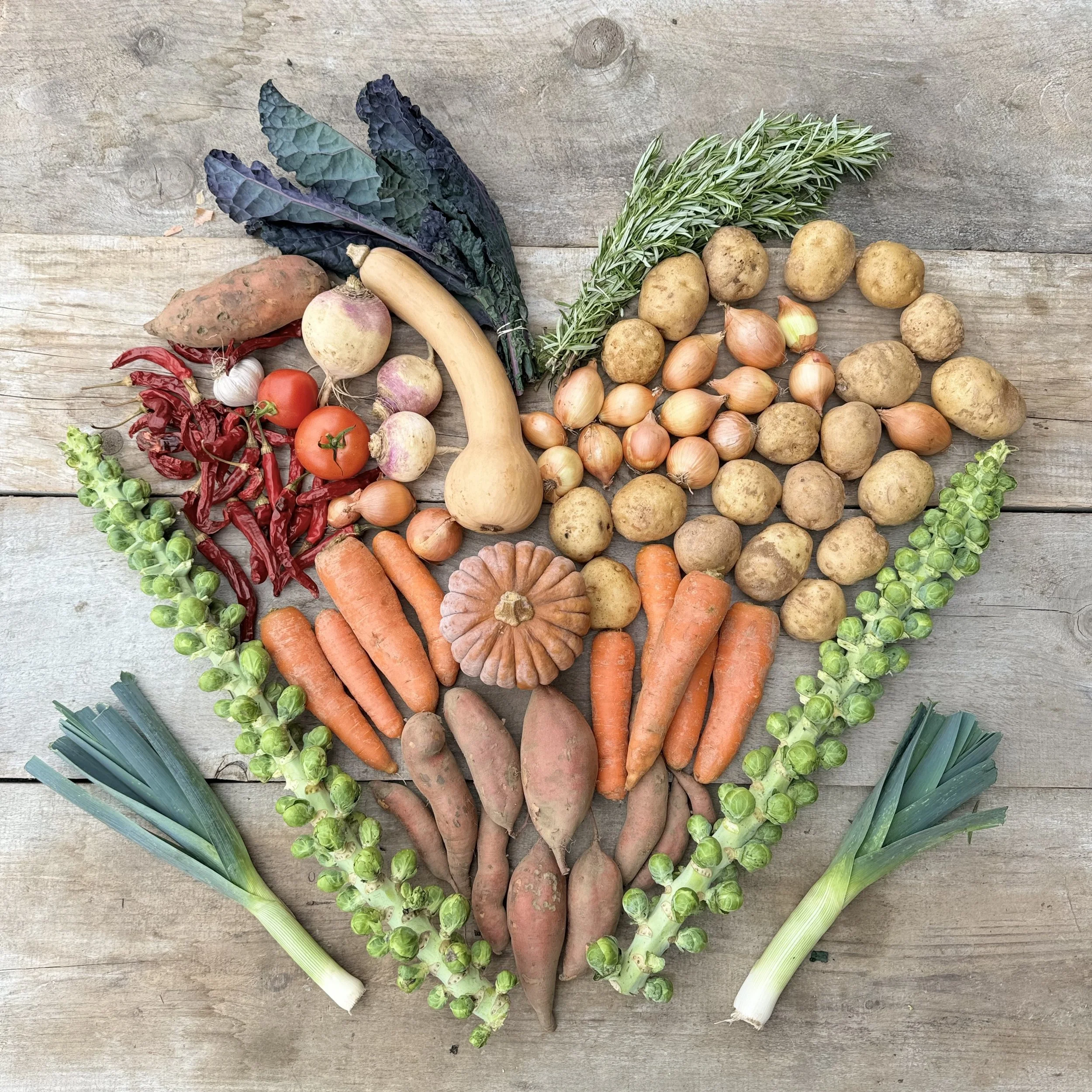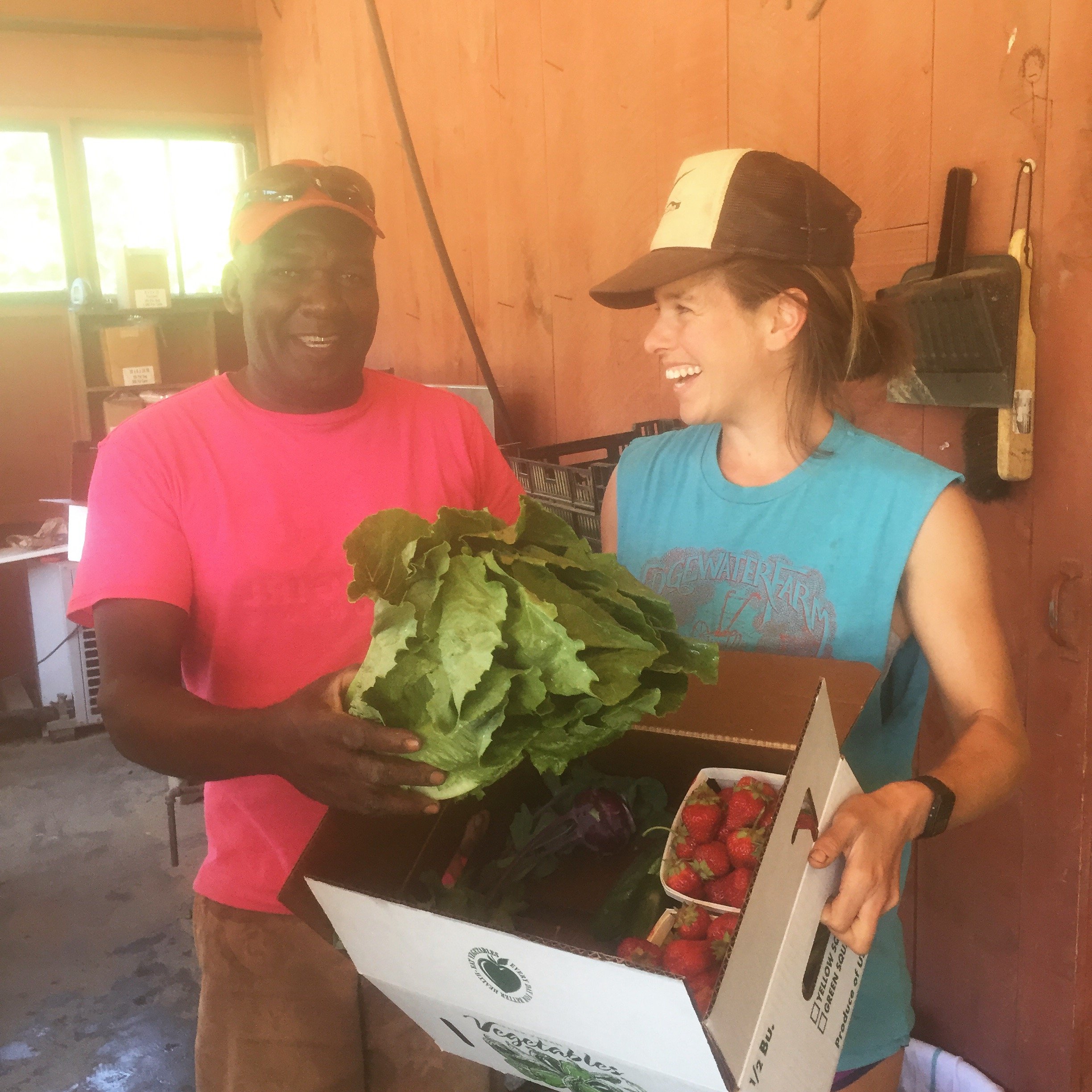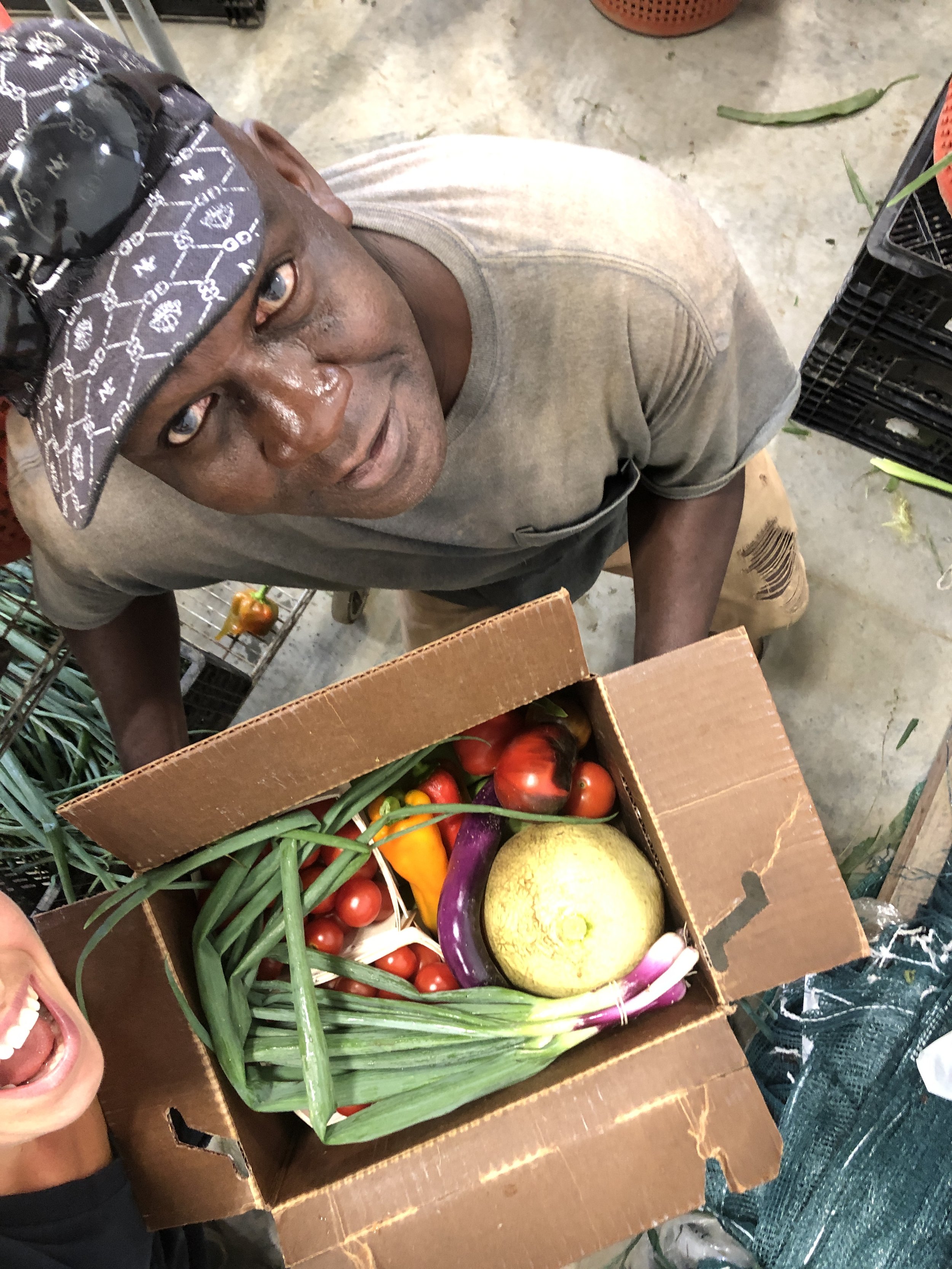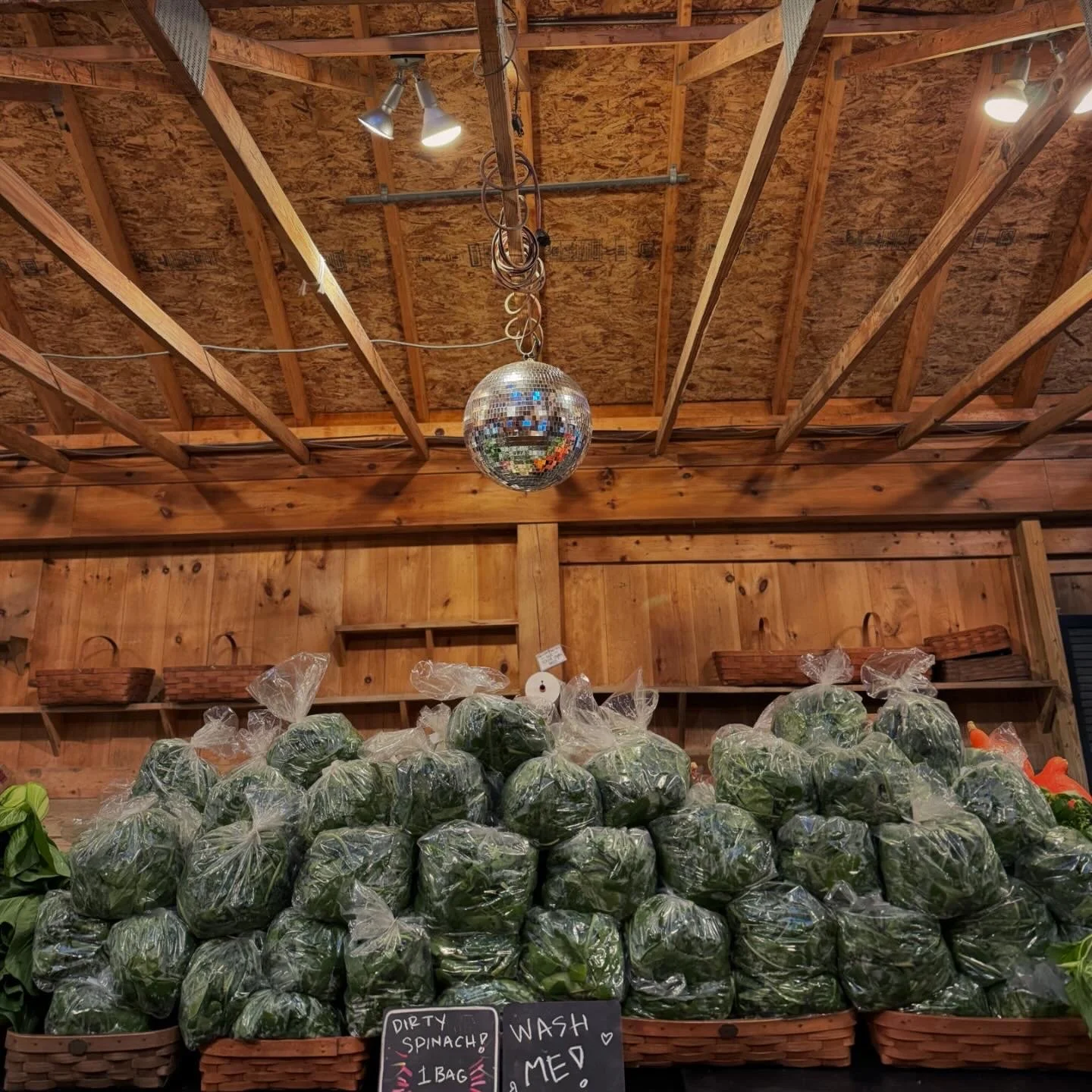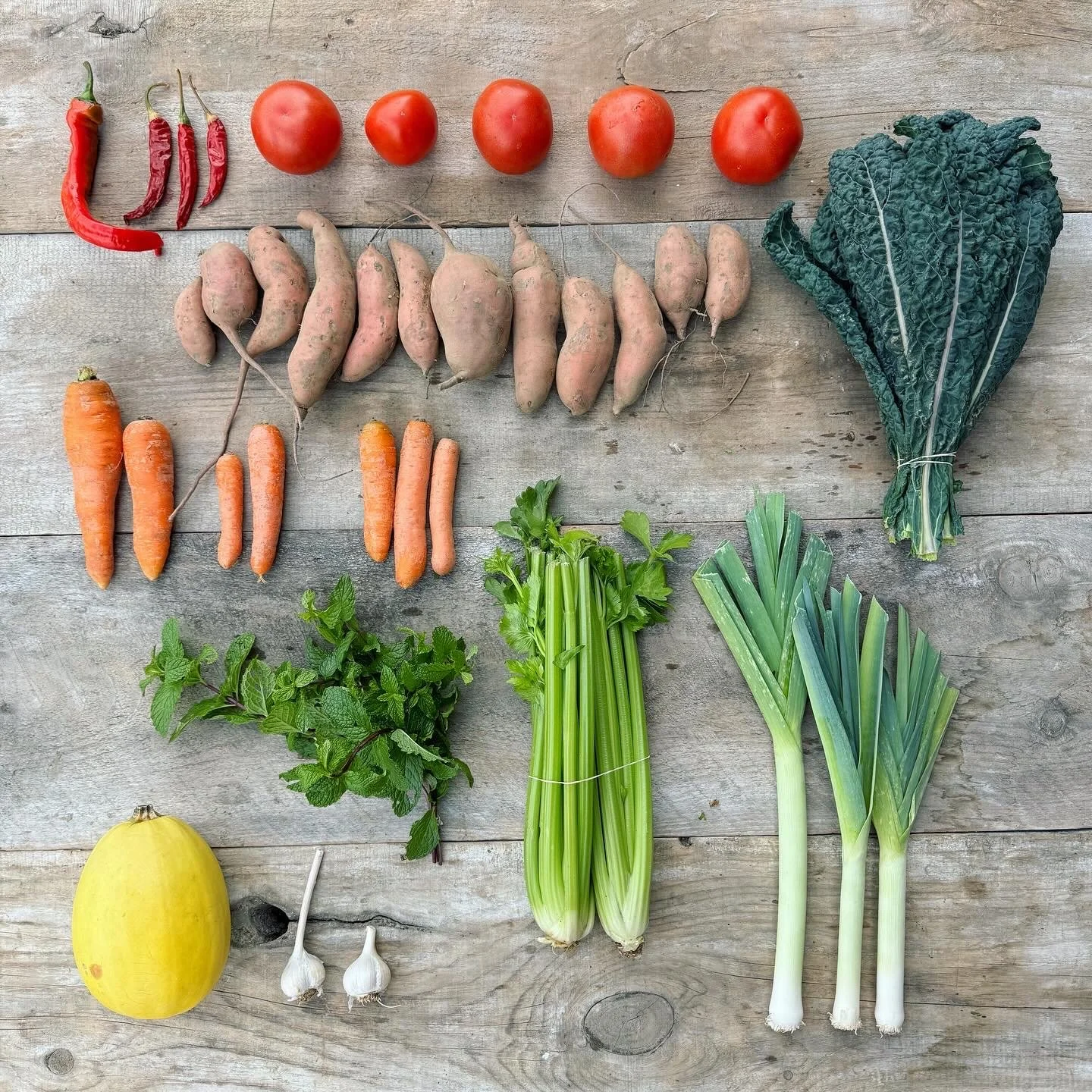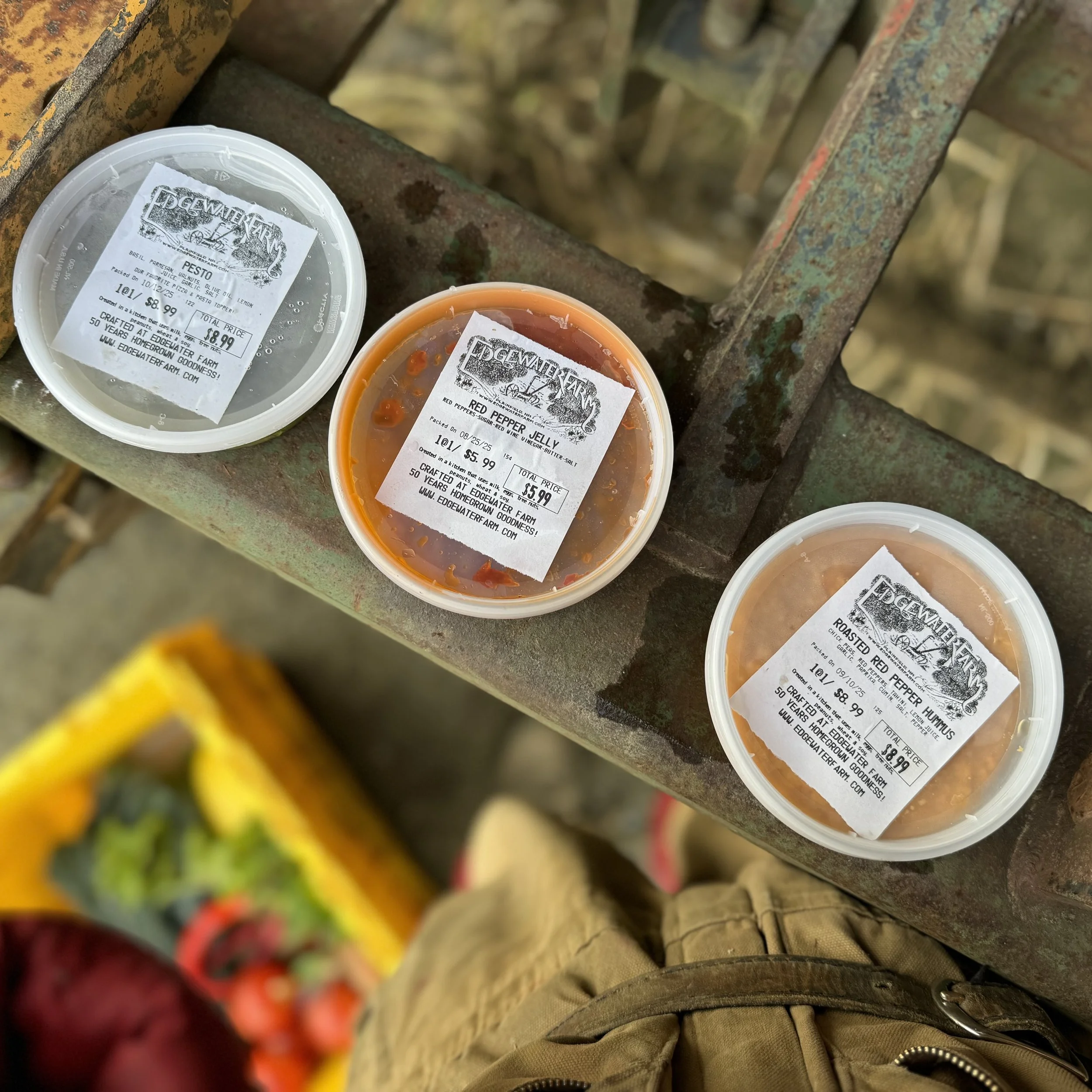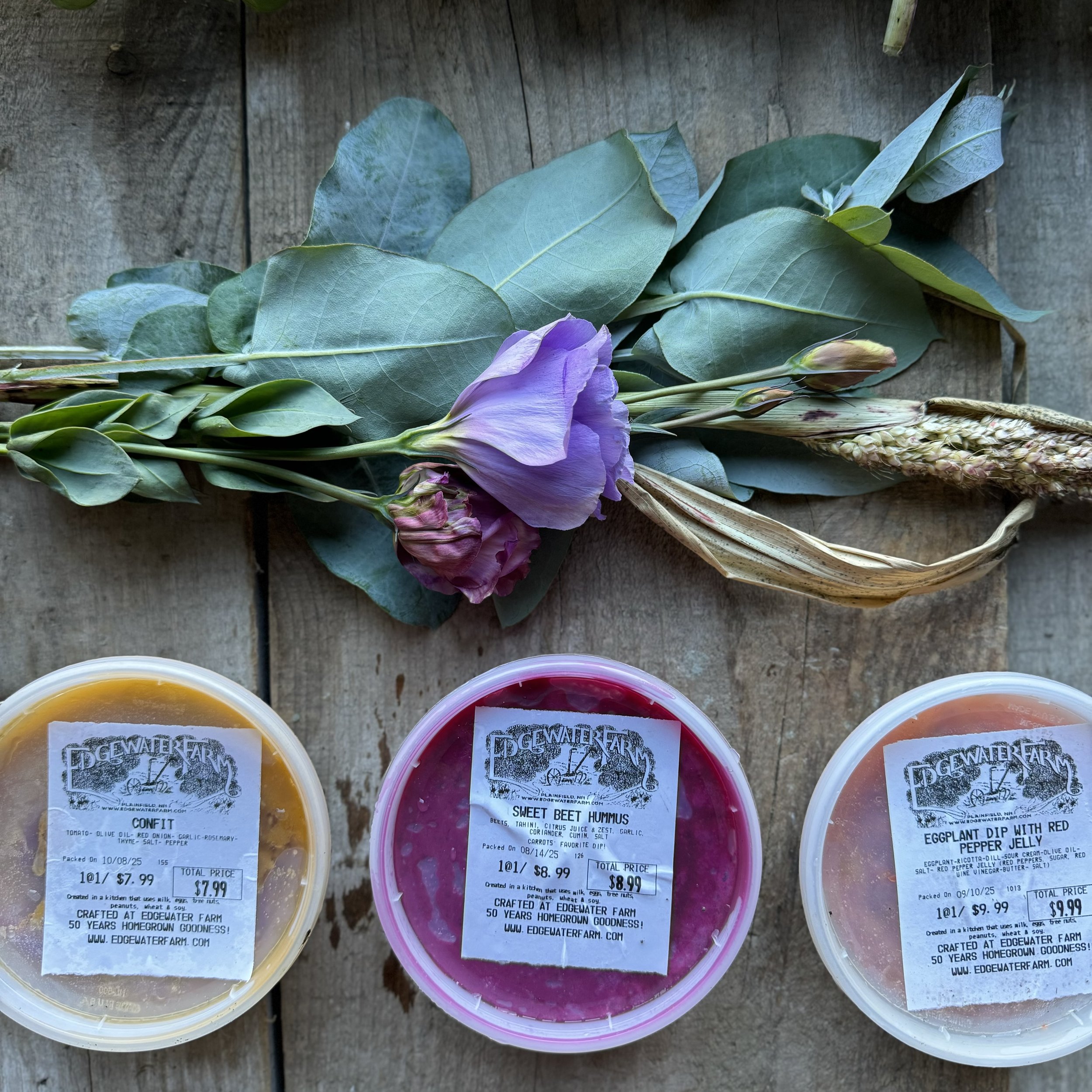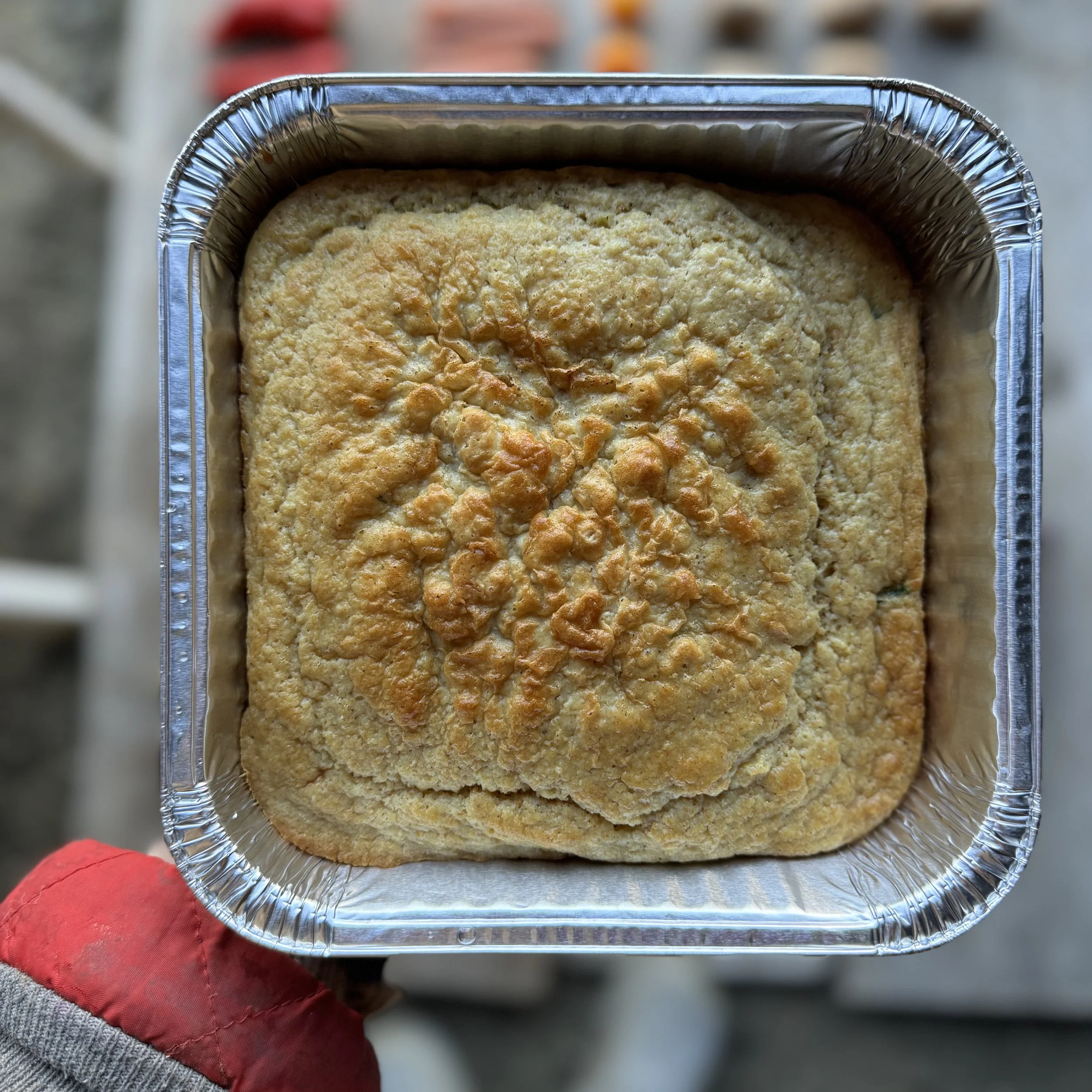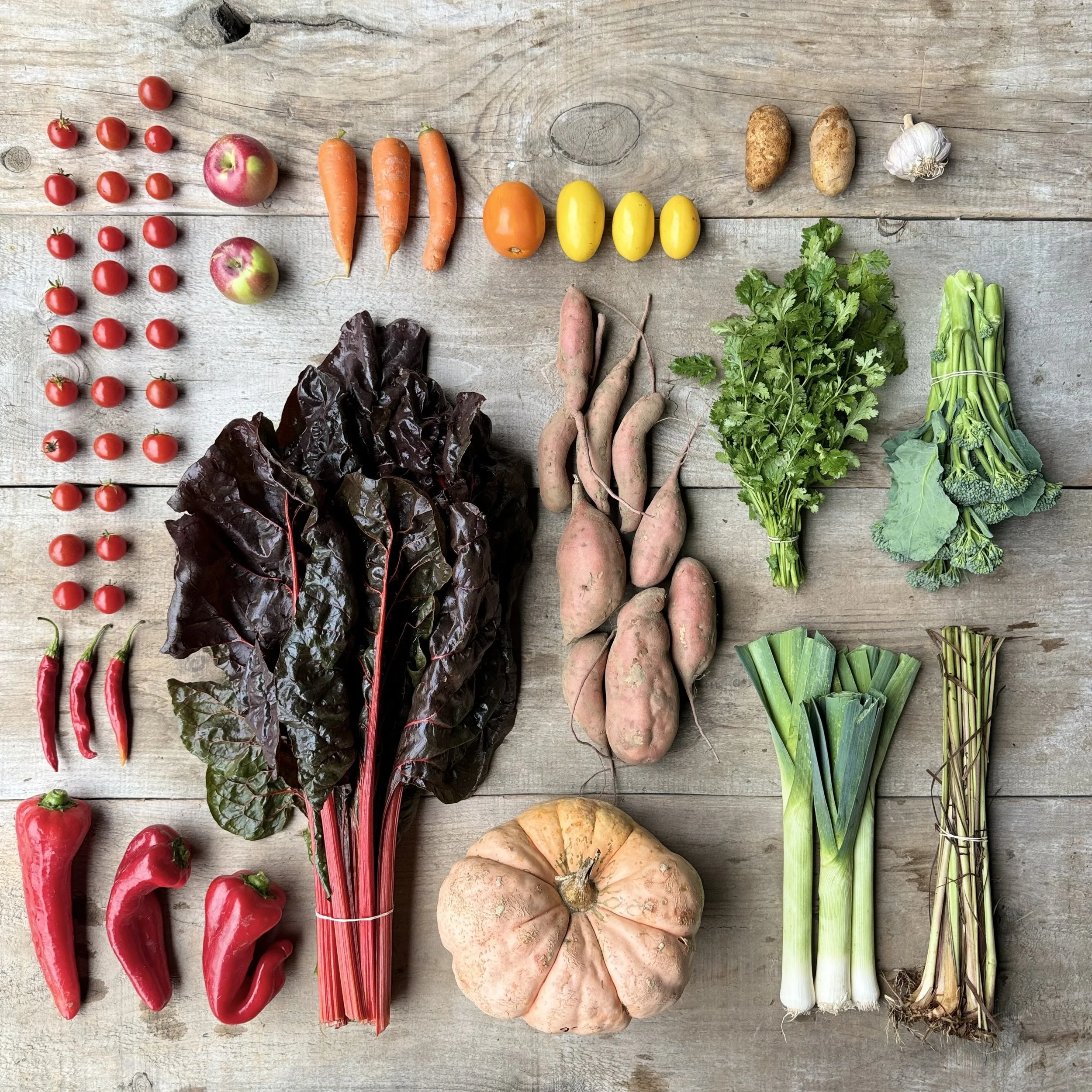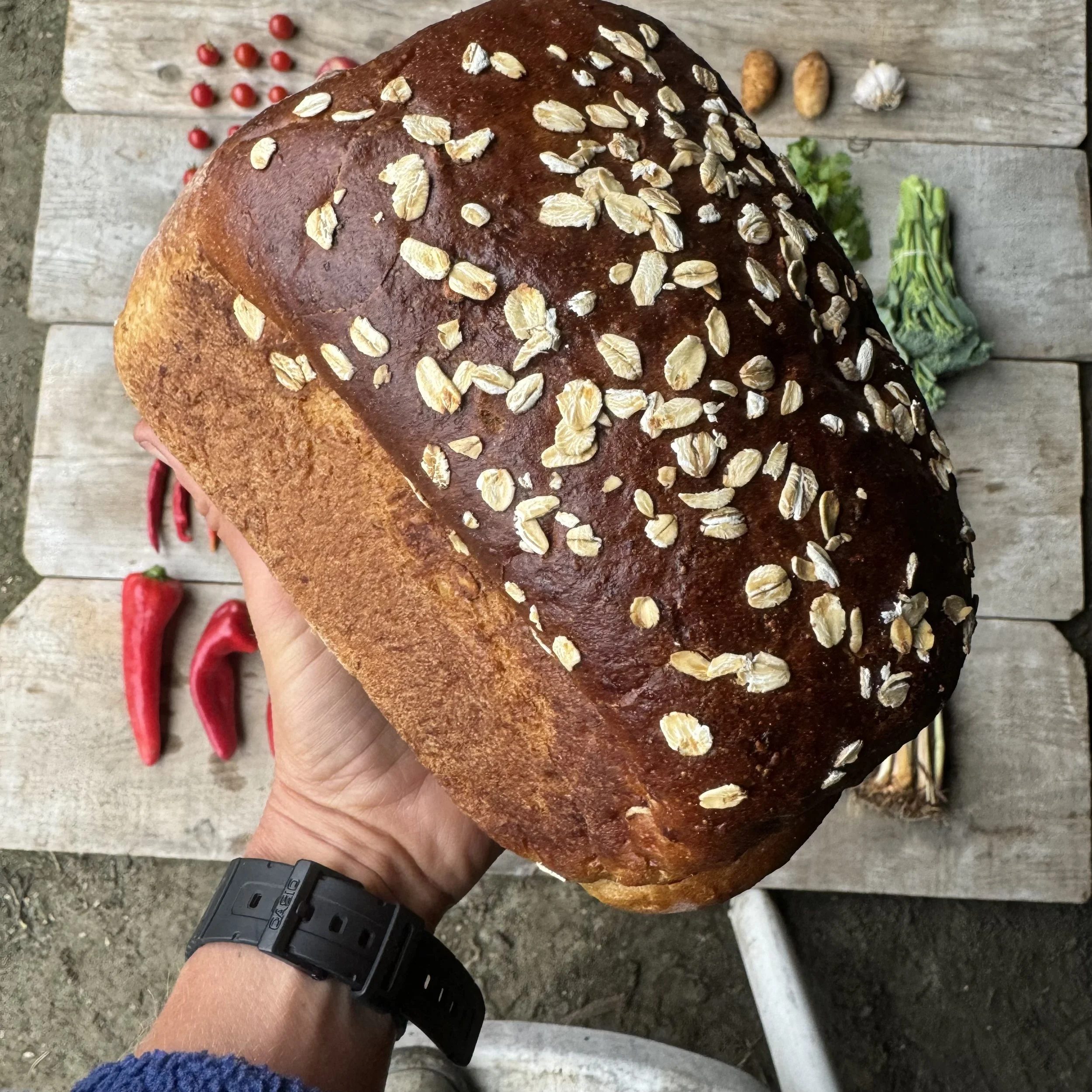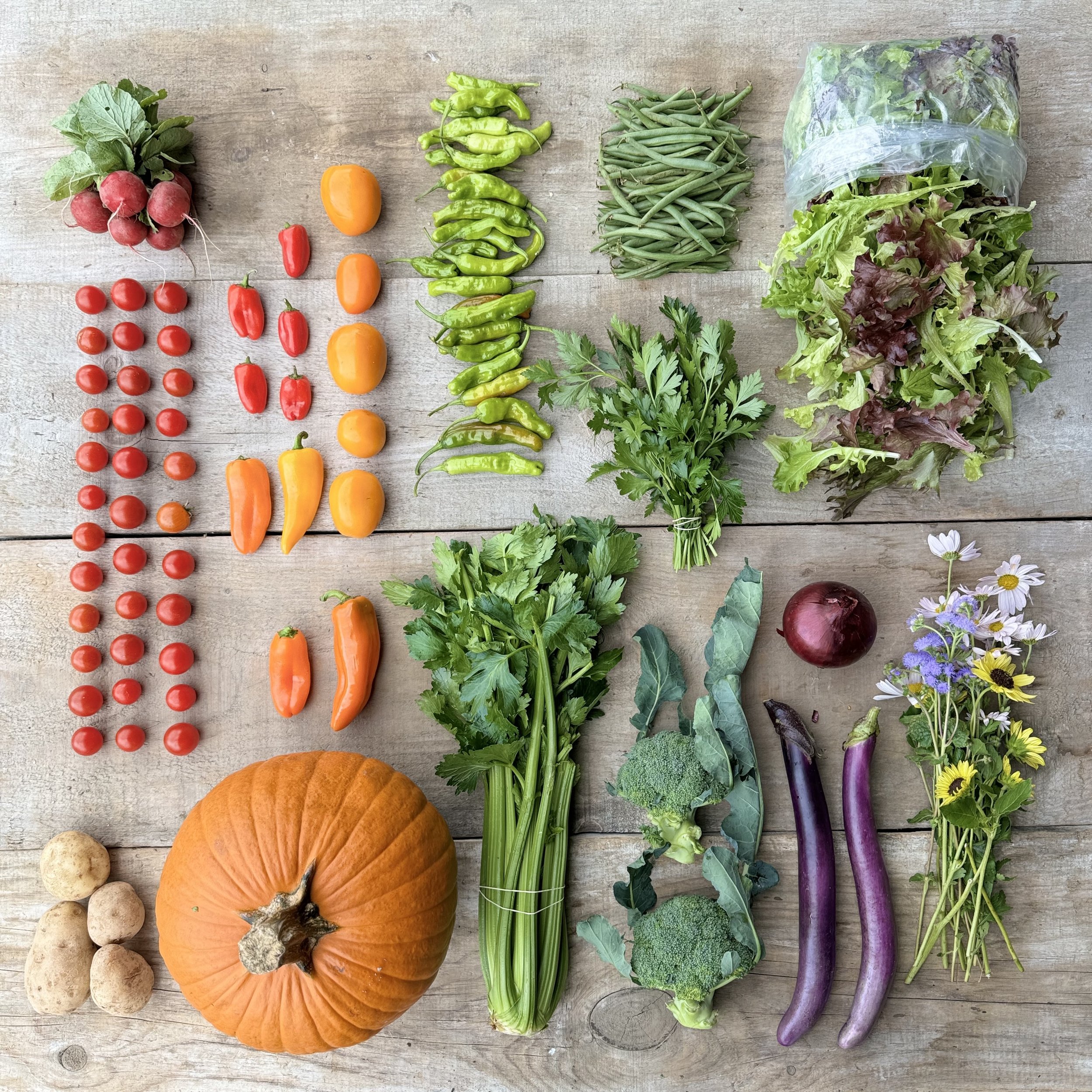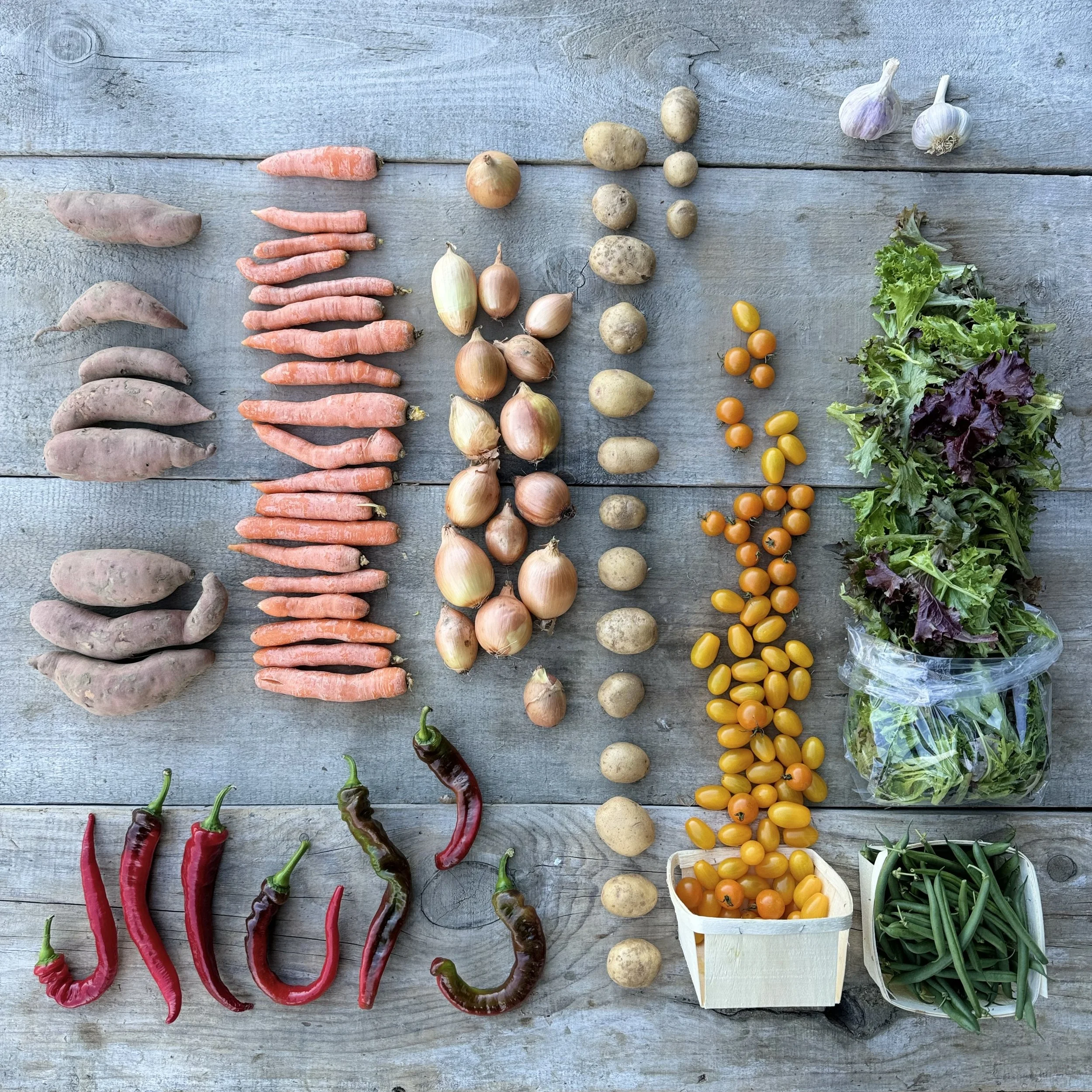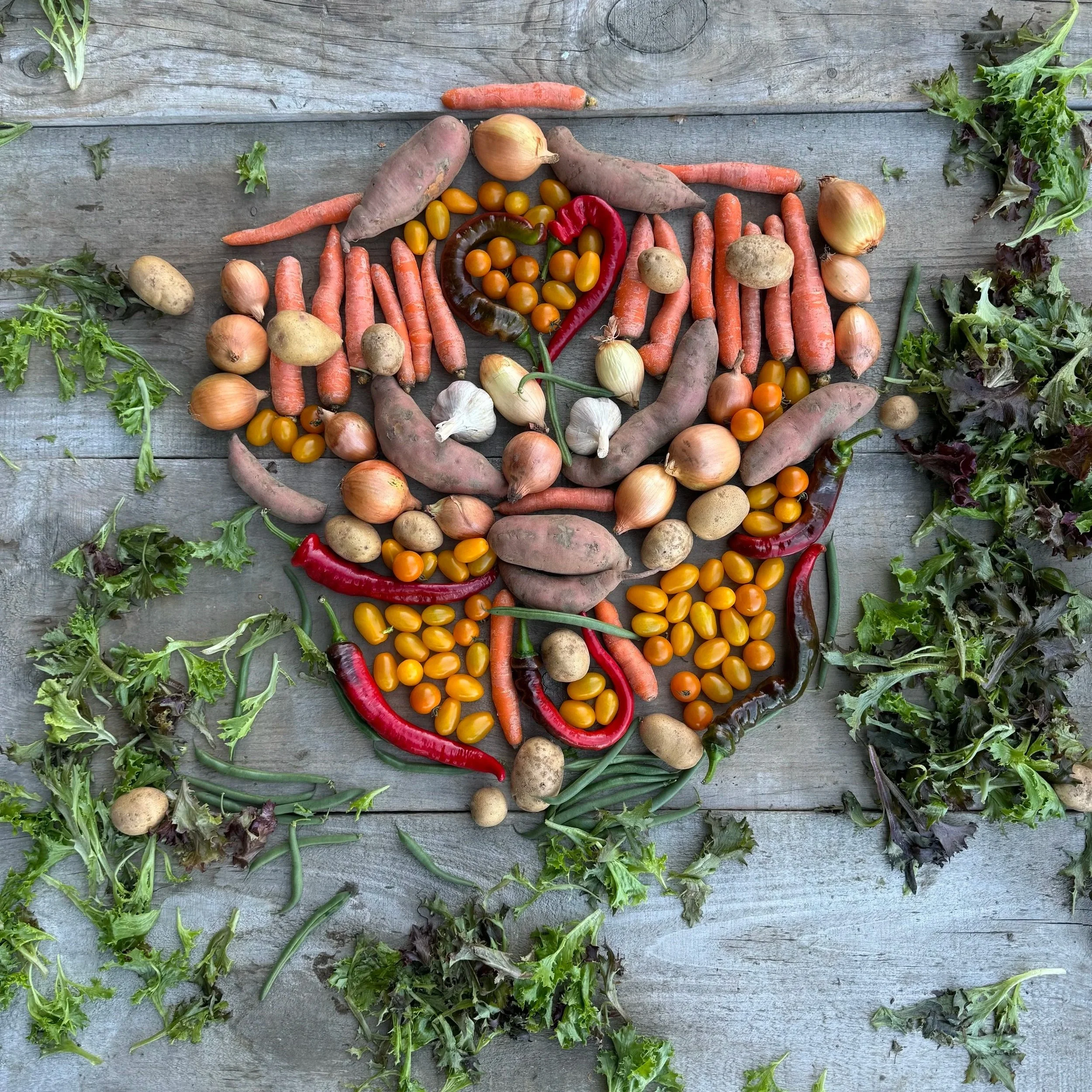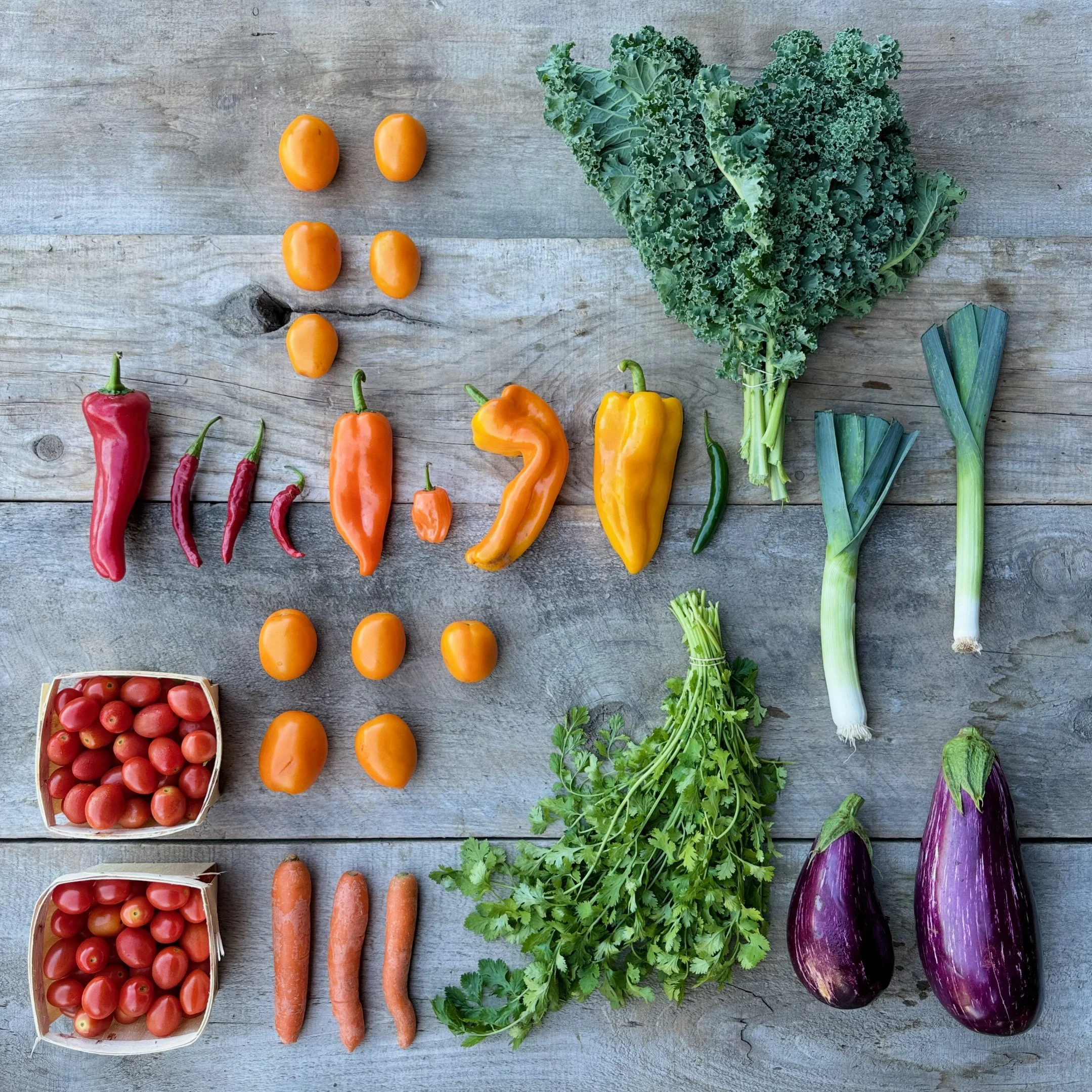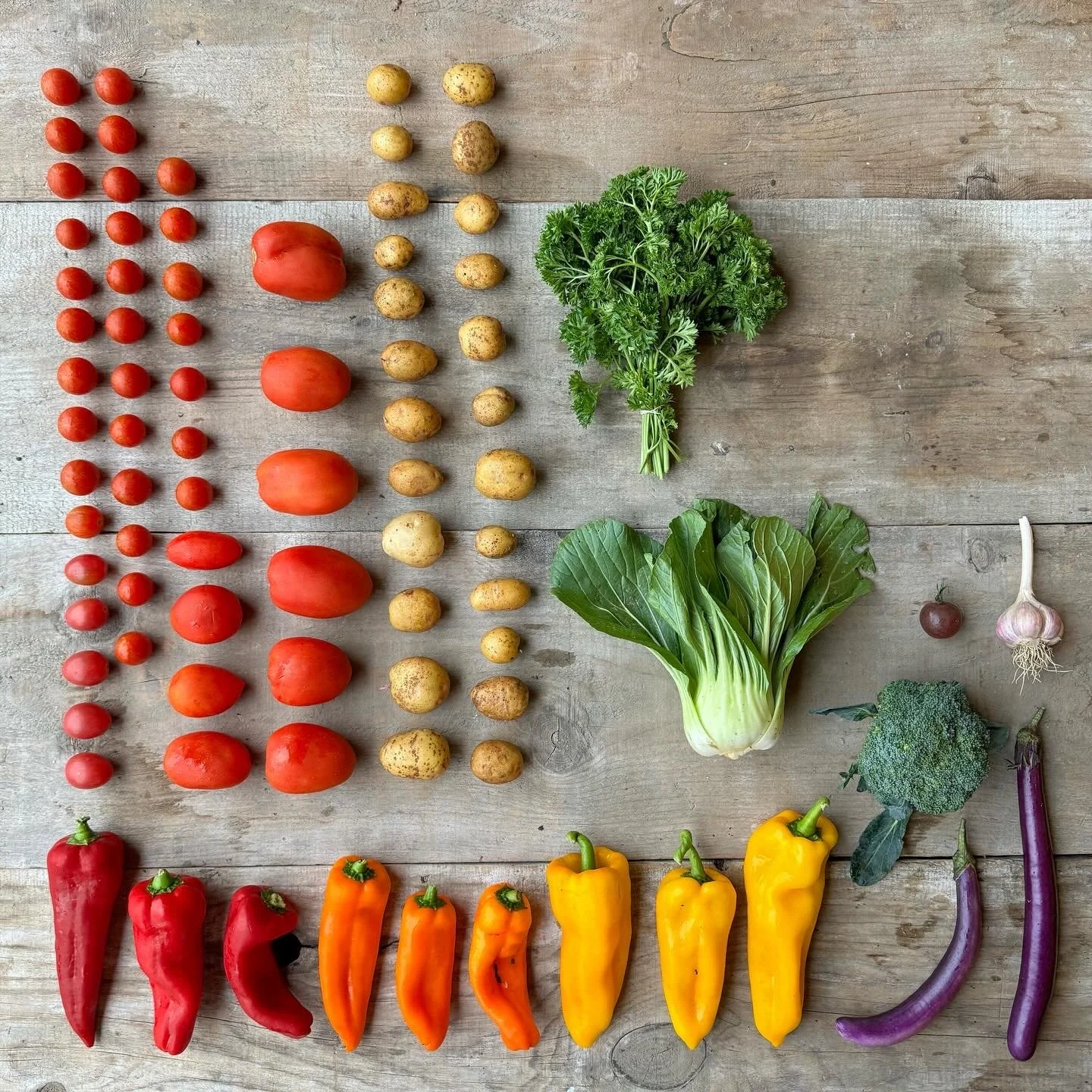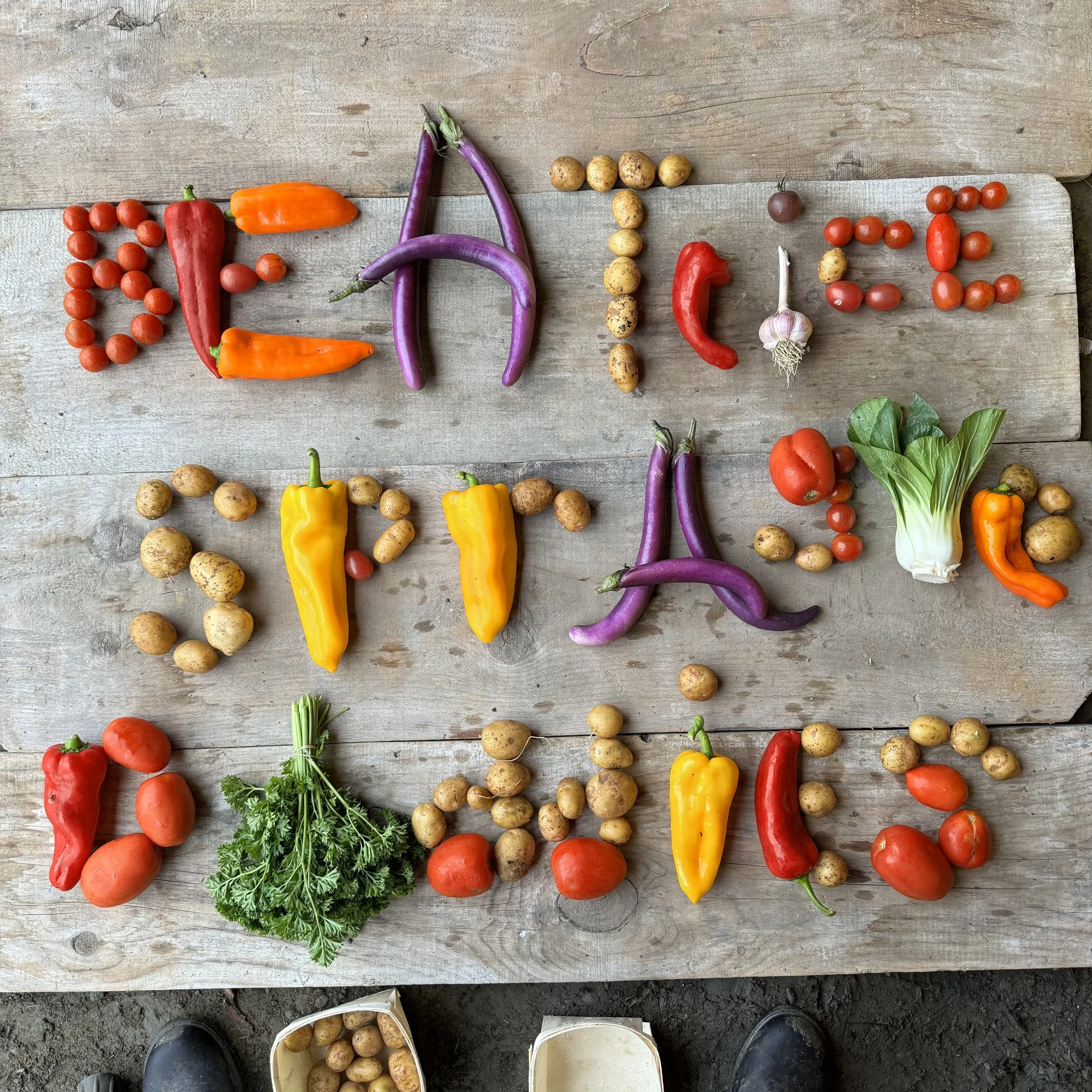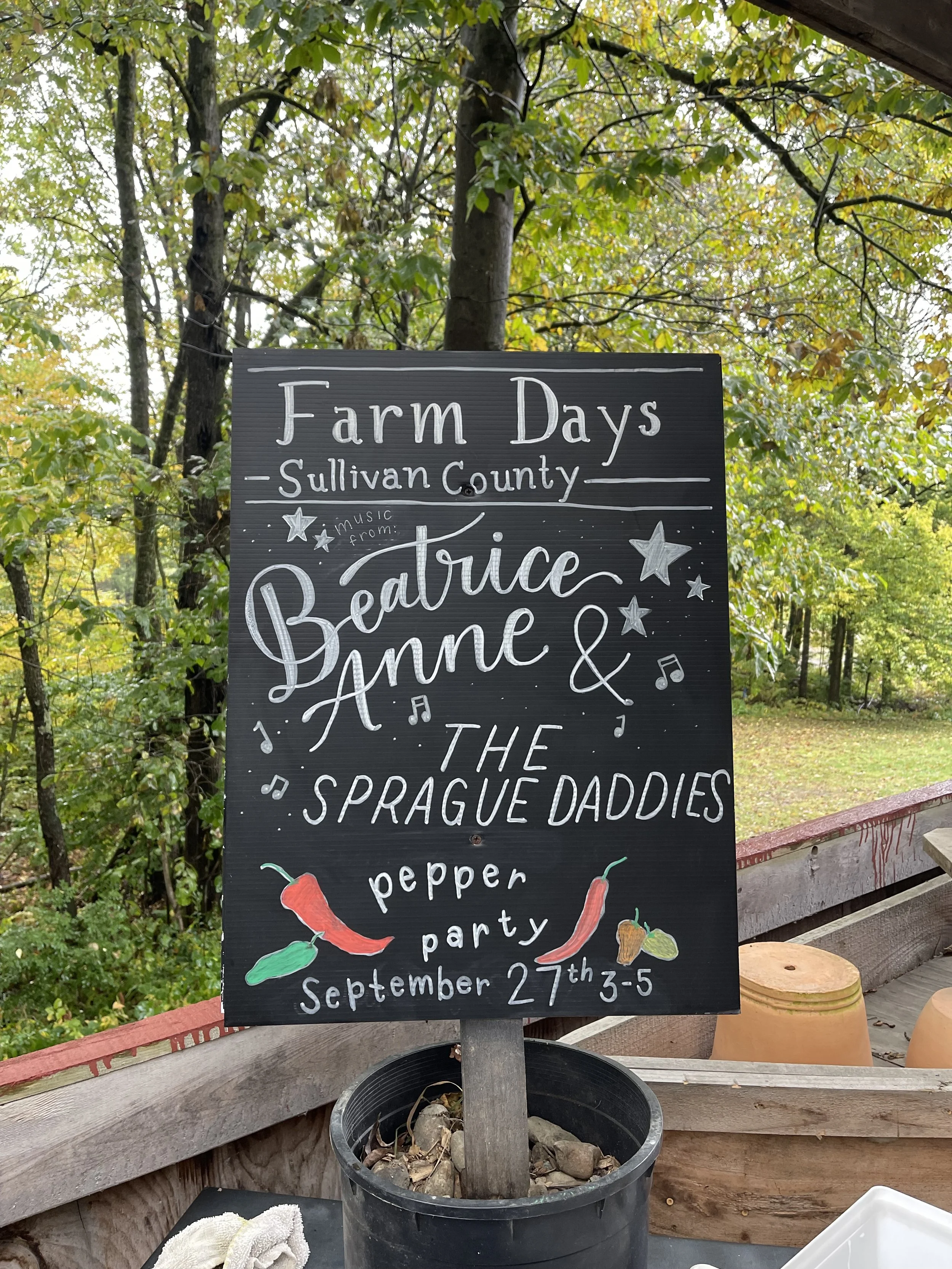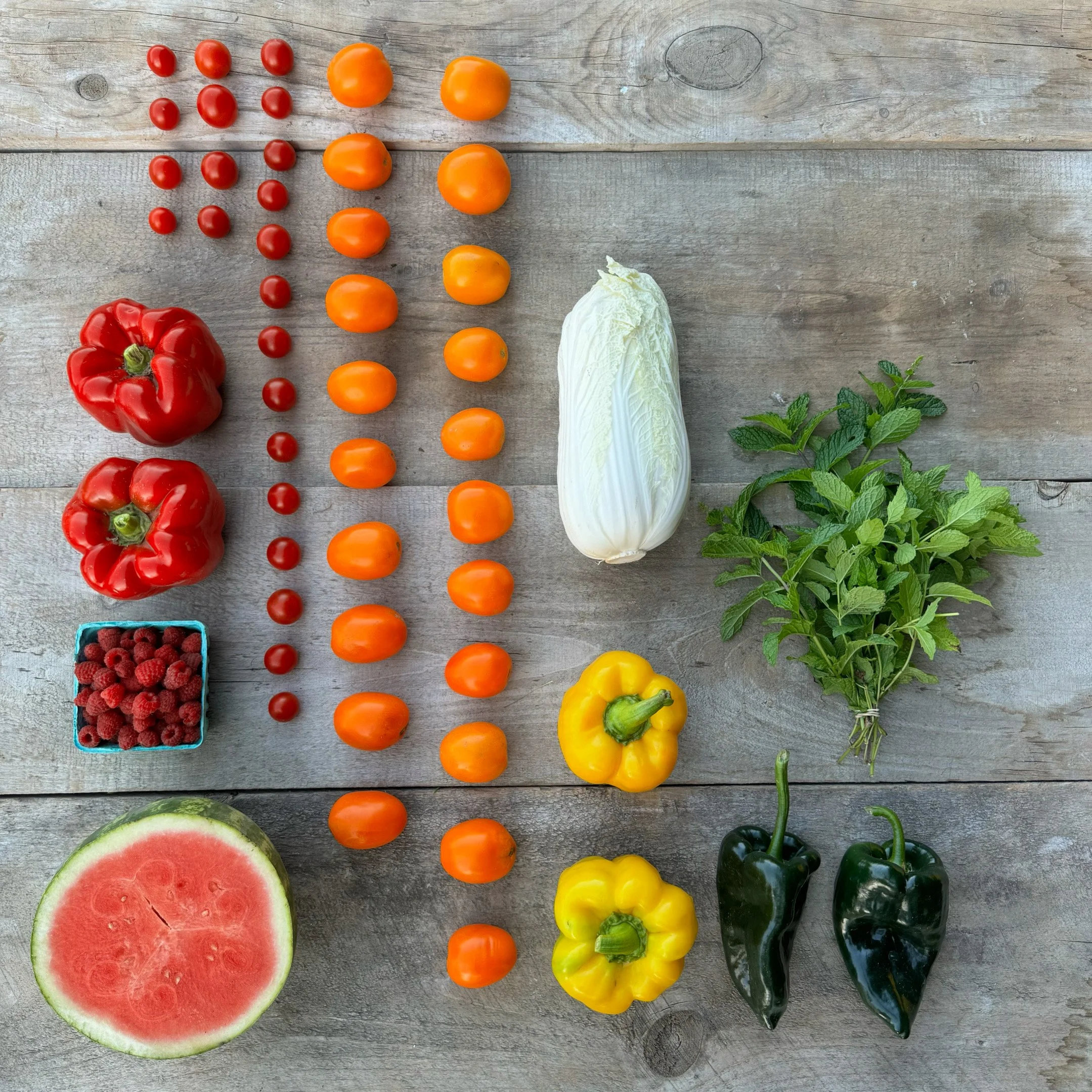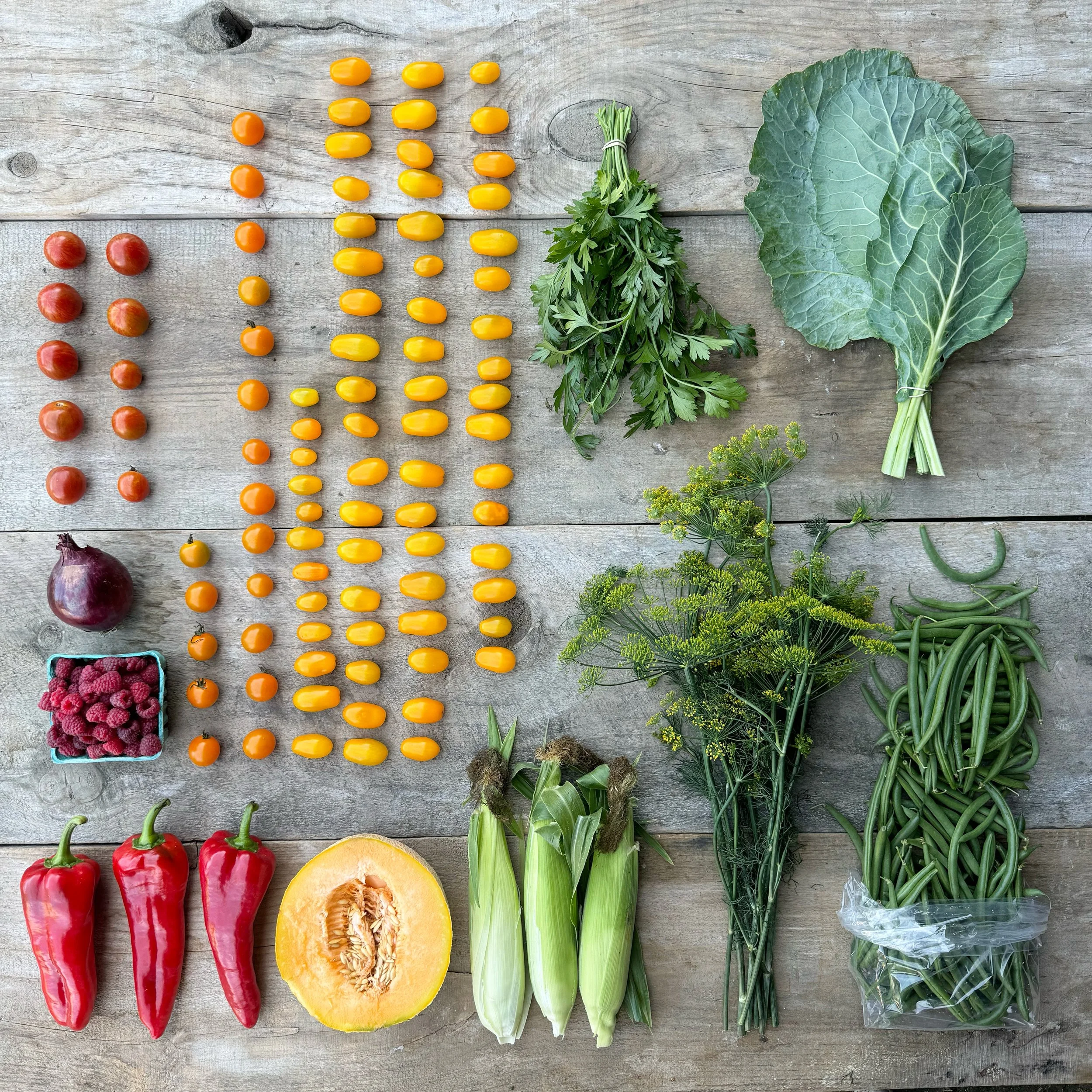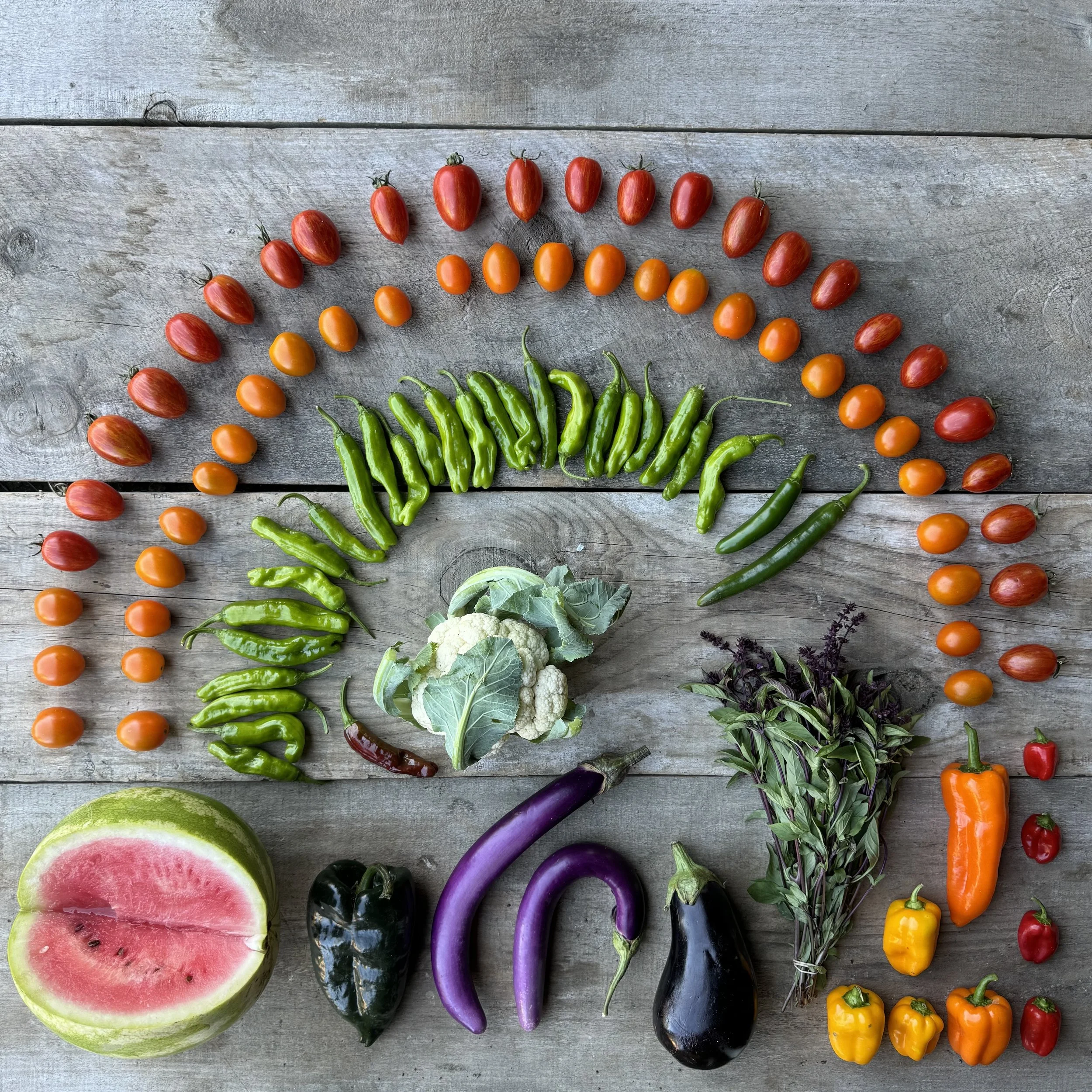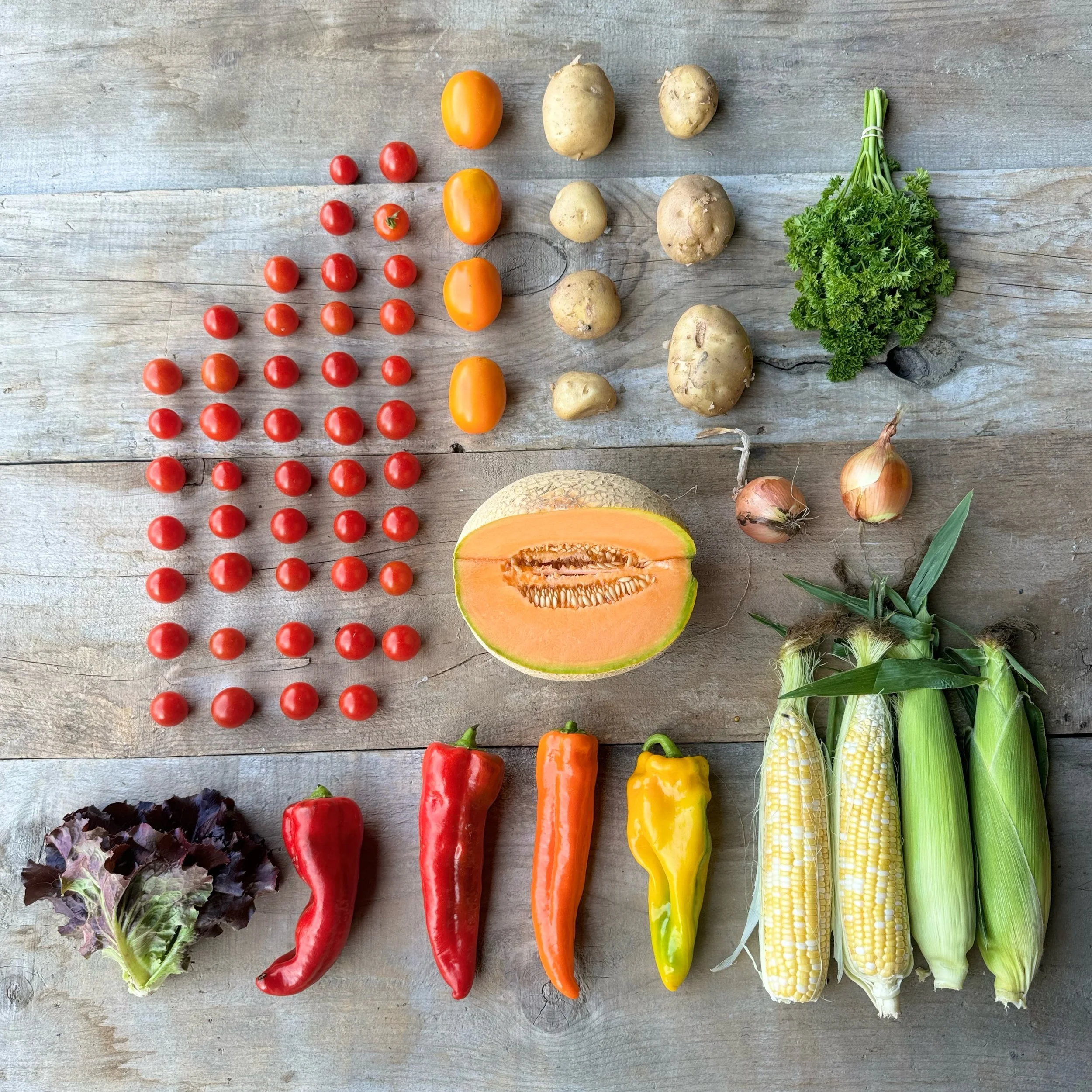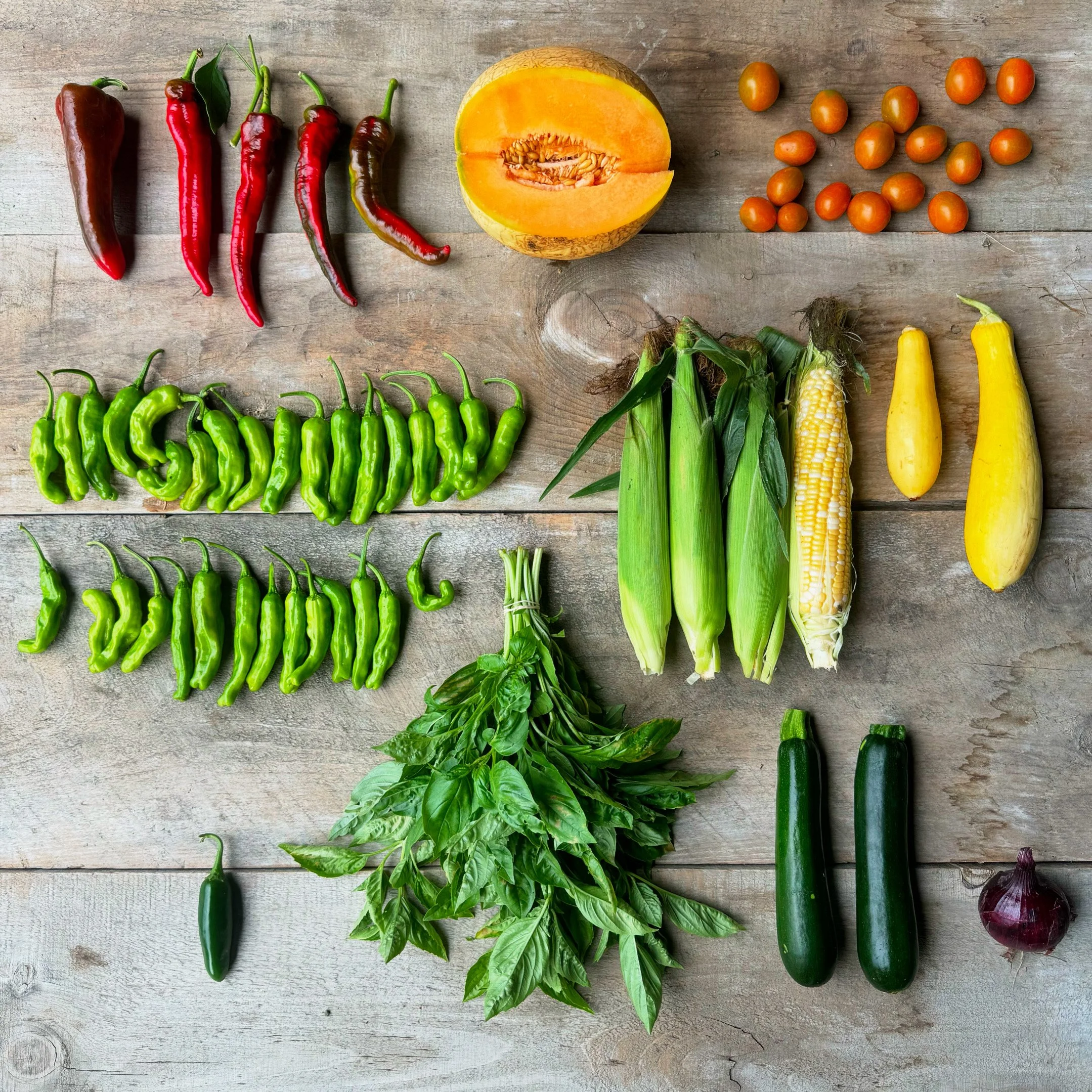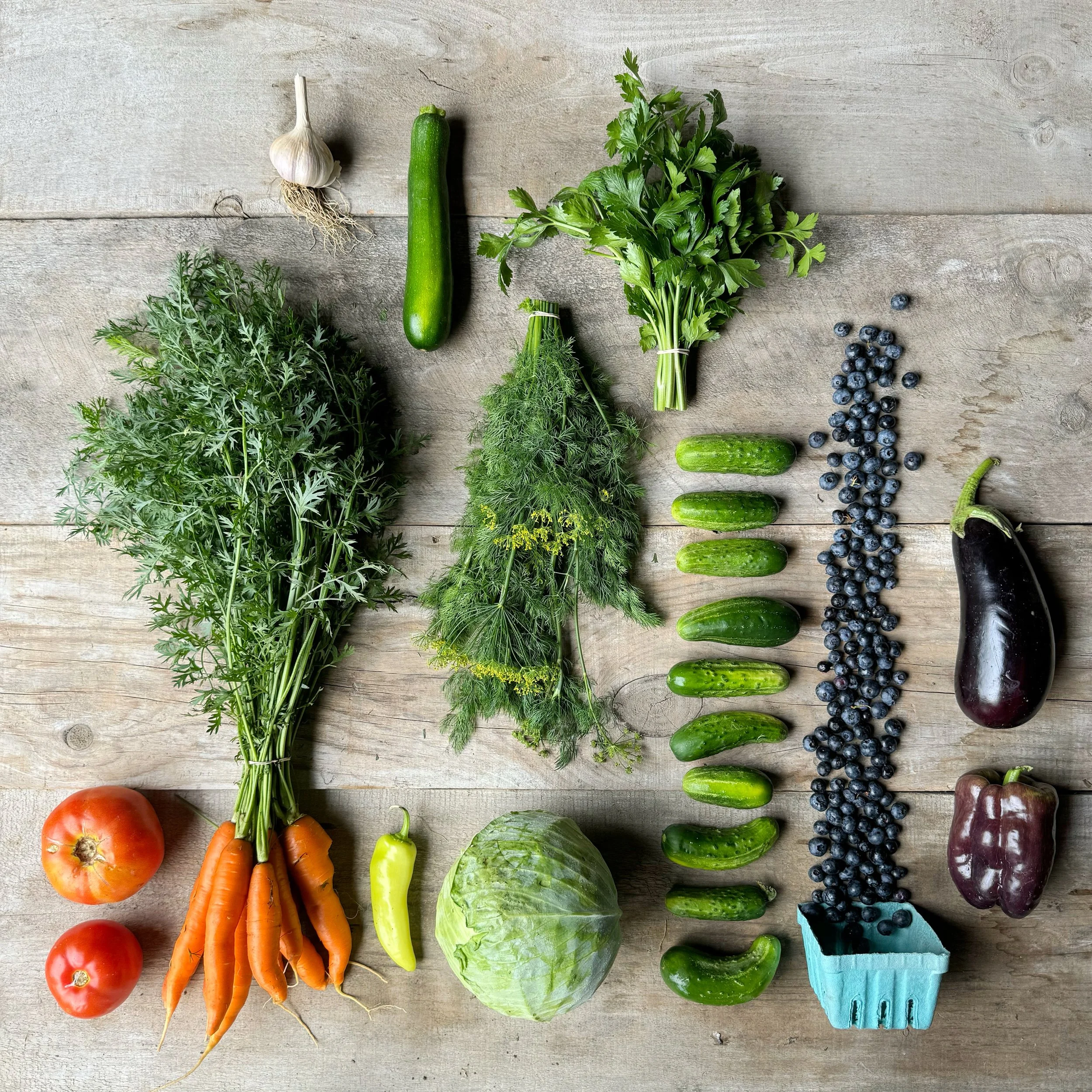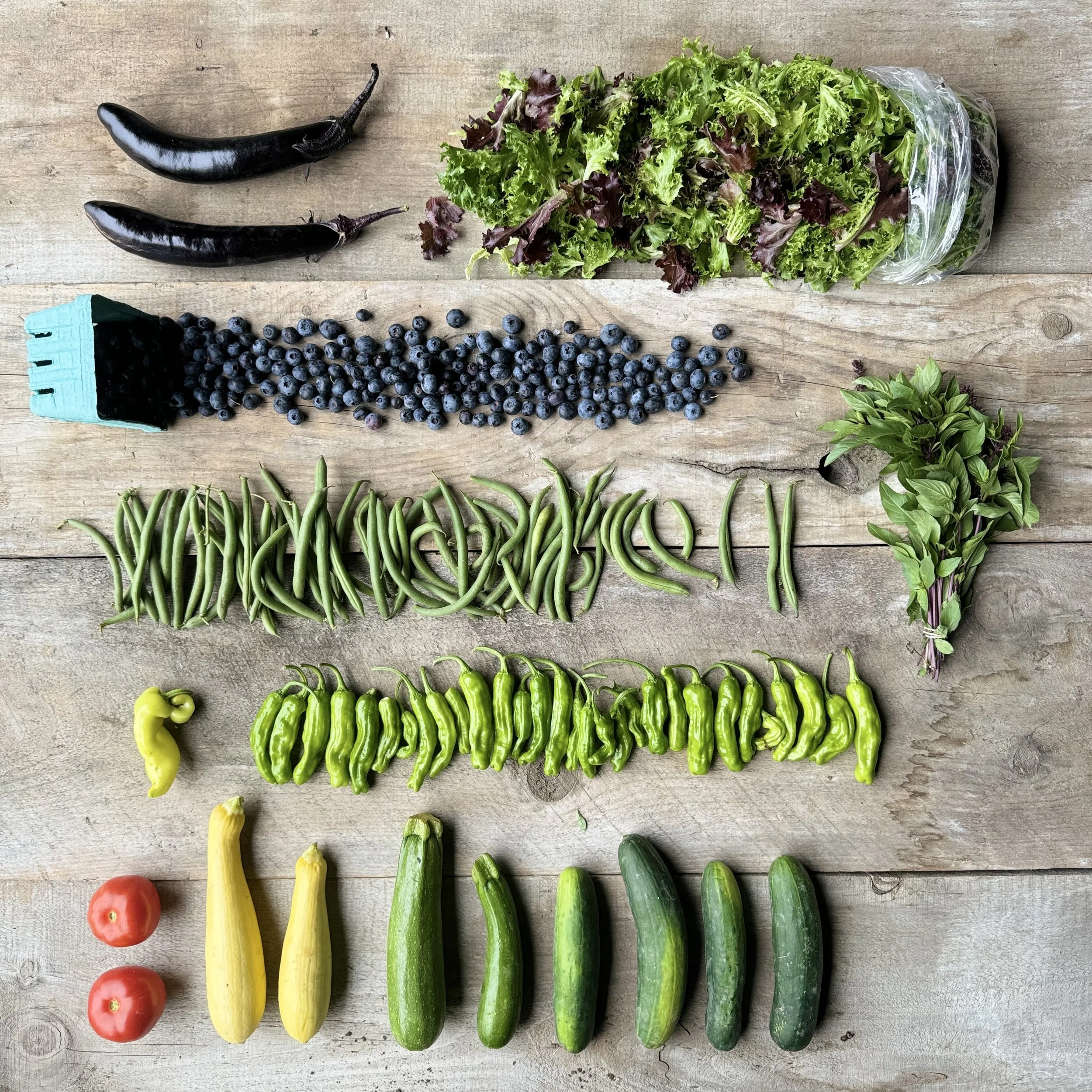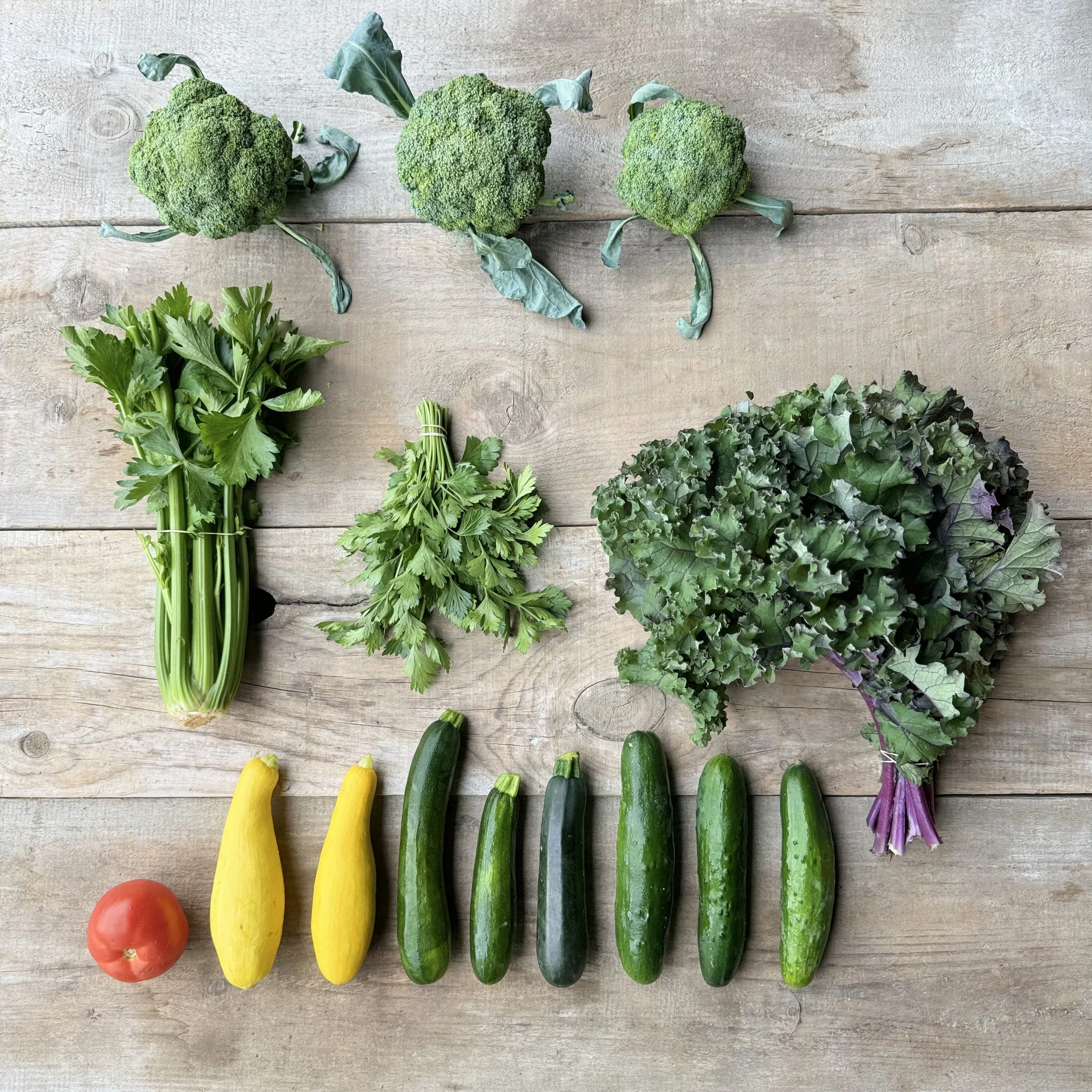P i c k l i s t
BLACK FUTSU WINTER SQUASH - BUTTERNUT WINTER SQUASH - ONIONS - PURPLE TOP TURNIPS - GOLD POTATOES - BRUSSELS SPROUTS - SWEET POTATOES - CARROTS - KALE - LEEKS - ROSEMARY - TOMATOES!
EDGEWATER update: Last picklist of season, marker of time, CSA comes to a close for 2025. Week 6 of fall CSA marks the finale to our 23 weeks of outdoor harvest. What began in June with strawberries and radishes ends in November with leeks and sweet potatoes. Something about this year’s end is finding me deep in my feelings. Maybe because this year feels bigger than food. This growing season was one to toss your hands in the air and say, ok drought just leave me standing. Focus on the gains instead of the losses, always stay ready for climate hiccups (ok, catastrophes), and hold your people close. Sure, nourish the body with food. But nourish the heart with people.
We had so many cool folks enter our farm/lives this season. Ali Schubert came in fresh with very little edgewater time and stepped into farmstand world like a pro. Alex, our kitchen’s lead with Megan at her side, also came in fresh with little direction from us “here is a kitchen, here is a cucumber, go!” and totally crushed it, turning us back onto grab and go salads, sauces and syrups we never knew we needed (ahem lemon verbena simple syrup! Rhubarb BBQ sauce!) and cookies galore. It’s been rad to see the farmstand thrive as we move through the years. The farmstand is the heartbeat of the farm and the crew that works there are angels on earth that keep it all together and keep it feeling like a hub to be shared.
On field crew we had newcomers Cheque and Jose. They came to work with us through the H2-A visa program. Quite frankly I’ve been hesitant to mention them this season and give them the light they deserve. But now that the season is closing and they are heading back to Mexico, i just want to share how amazing these guys are. Just more earth angels that have some how made their way to edgewater. They are both so kind and cool and work so hard and I am full of gratitude they spent the growing season with us in Plainfield NH. Also Jalina who was on field crew this year- a total bad ass who entered with 0 farming experience. She is a neurologist that got let go from her federal work research job back in the Spring. She spent the summer picking strawberries, summer squash, cucumbers, cherry tomatoes, blueberries, etc. until she found a job back in her field of literal brain science. She had a very short stint here, but she seamlessly went with the flow of it all and made a very lasting impression. Again, I can not stress enough all the amazing people that entered our lives in 2025. I am already looking back on this years shitty growing season, and forgetting all about the lack of water and taking note of the good people instead.
car full of all the best/ a proper send off to Cheque and Jose
As always, BIG UPS to the CSA fam. I am forever so taken back when you choose our farm to be your farm. It means more than you know.
In the words of my dear friend Rita of Stitchdown farm, “Time to trade in these work pants for the cozy fireside seed ordering farm planning varietal (sweats) worn in winter.”
Happy winter everyone, hope to see you back in 2026… I’ll be here (lol)
And if you are jonesing to sign up for our 2026 CSA, check the website come Jan. 1 :)
FARMY FOODIE PRO-TIPS:
The following recipes was crafted specifically for this week’s CSA by our friend and hyper local chef (he lives just up the road), Mitchell Davis. if you are curious about alllll the recipes he has to offer, check out his substack:
Lebanese Pickled Turnips
These Lebanese pickles are known as lifit in Arabic. They are ubiquitous in the Middle East, where they garnish falafel and other pita sandwiches and are an integral part of every relish plate. They develop a deep crimson color from the addition of a small beet in the brine. They’ll keep about a month in the fridge.
1 cup water
2 tablespoons kosher salt
1 tablespoon sugar
2 teaspoons black peppercorns
1 bay leaf
1/2 cup distilled white vinegar
4 turnips (about a pound), peeled and cut into wedges or batons the shape of french fries
1 very small beet, peeled and thinly sliced
2 or 3 cloves garlic, thinly sliced
Bring about 1/2 cup of the water to a boil with the salt, sugar, peppercorns, and bay leaf. Stir to dissolve the salt and sugar. Remove from the heat and let cool to room temperature. Add the the remaining 1/2 cup of water and vinegar and set aside. Layer the turnips, beet, and garlic into a clean quart jar and pack tightly. Pour in the warm brine. (The vegetable should be totally submerged.) Cover and let sit in a cool, dark place for 5 to 7 days to cure. The liquid will turn dark red and turnips will wilt. Refrigerate for at least a day before enjoying.
Squash or Pumpkin Chiffon Pie Makes one 10-inch pie, 8 to 10 servings
So few people seem to really like traditional pumpkin pie, to everyone’s relief at Thanksgiving I started making this pumpkin chiffon pie using roasted kuri or kabocha squash purée. The recipe was given to me by my friend Adam’s mom, Maxine. It has a light texture and delicate spiced flavor, not nearly as heavy or overpowering as the original.
For the crust
1 1/2 cups Graham cracker crumbs (from about 14 whole Graham crackers)
1 tablespoons sugar
3 tablespoons melted unsalted butter
For the filling:
3/4 cup milk
3 large eggs, separated
1 cup sugar
1 envelope unflavored gelatin (1 tablespoon)
1 teaspoon cinnamon
1/4 teaspoon freshly ground nutmeg
1/2 teaspoon kosher salt
1 1/4 cups roasted squash purée* (see below) or canned pumpkin (not pie filling)
Preheat the oven to 350°F. Place the Graham cracker crumbs in a 10-inch glass, ceramic, or metal pie plate. Mix in the sugar and the melted butter. The crumbs should take on the consistency of wet sand. Remove 2 tablespoons of this mixture and reserve. With your fingertips, press the remaining crumbs to the edge of the pie plate, to make an even and smooth crust. Bake in the preheated oven for 10 minutes, until lightly browned. Cool. In a medium bowl, whisk together the milk and the egg yolks Whisk in 2/3 cup of the sugar, the gelatin, cinnamon, nutmeg, and salt. Transfer to a small saucepan and set over medium-low heat. Cook, stirring constantly, until the gelatin and sugar have dissolved (rub a drop between your fingertips to check) and the mixture begins to thicken, 3 or 4 minutes. Stir in the pumpkin and remove from the heat. Transfer to a large bowl and chill.
Using an electric mixer, beat the egg whites until they form soft peaks. Slowly add the remaining 1/3 cup sugar and continue beating 3 or 4 minutes, until the whites are stiff and glossy. Using a rubber spatula, fold about 1/4 of the egg whites into the pumpkin mixture to lighten it, and then fold in the remaining whites. Pour this mixture into the Graham cracker crust and smooth out the top. Sprinkle with the reserved crumb mixture and chill several hours or overnight before serving.
*If you need to roast the squash to make the purée, turn the oven up to 400F. Split the squash in half and remove the seeds. Set the halves cut side down on a parchment-lined baking tray and set in the preheated oven to roast until soft, about 45 minutes. Cool, scoop out the flesh from the skin, and purée in a food processor until smooth.

